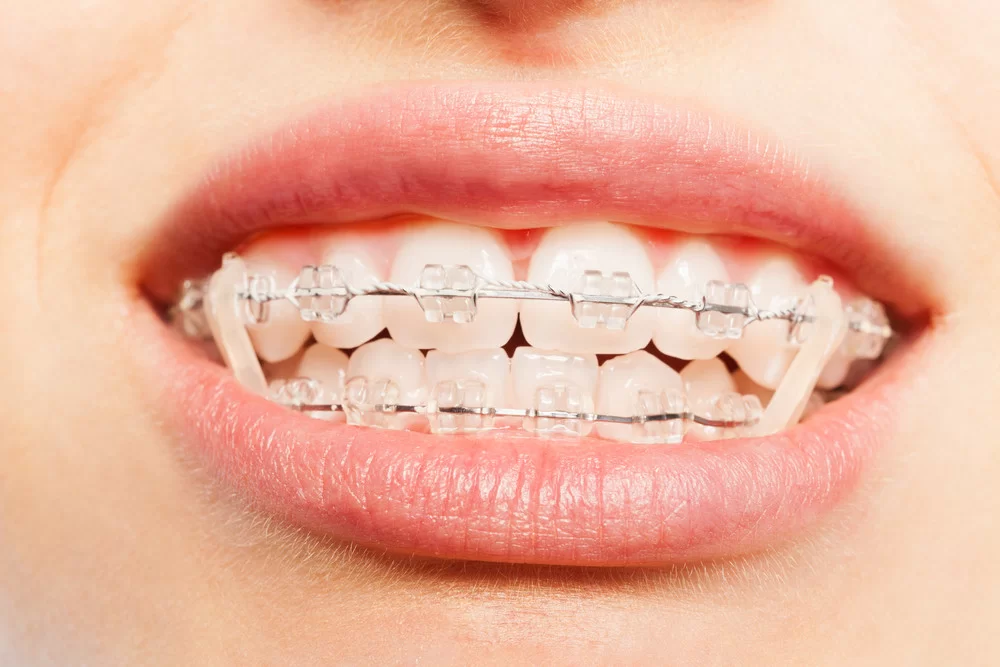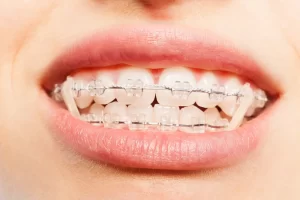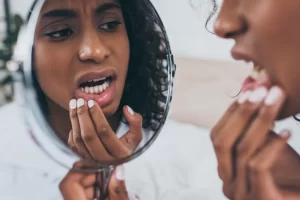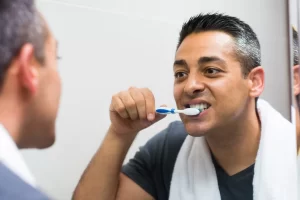Are you ready to begin orthodontic treatment? Are you ready for the Stoll Orthodontics team to transform your smile? While orthodontic treatment will improve the look of your smile, it can also help correct your bite and can even improve the way your top and bottom jaw function together. Most people have heard of braces and understand what they do, straighten teeth, but do you know the purpose of elastics for braces?
Metal braces, ceramic braces, and clear aligners are just part of the puzzle piece when it comes to straightening your teeth and correcting your bite. Another major player in the orthodontic treatment game is elastics.
At Stoll Orthodontics in Thornton, CO, we use elastics alongside metal braces, ceramic braces, even clear aligners such as Invisalign.
What are orthodontic elastics?
Orthodontic elastics, more commonly known as “rubber bands,” are exactly that! These elastics look just like tiny rubber bands and are made of durable, medical-grade latex. Orthodontic elastics are worn on either side of the mouth and hook from the top canines onto the bottom molars. These elastics boost the power and speed of braces by keeping the archwire in place. Rubber bands assist Dr. Stoll in correcting your bite and achieving proper alignment.
Why do orthodontists use elastics?
Rubber bands are crucial to the bite-fixing phase of your orthodontic treatment. These little elastics exert consistent, gentle pressure to help move your top or bottom jaw into place. The rubber bands act as an additional force to help shift your teeth into their desired spot more efficiently. Your orthodontic treatment plan may require elastics if you have an of the following bite irregularities:
- Underbite
- Overbite
- Overjet
- Crossbite
- Open bite
*Open bite treatment may require a different positioning of the elastic bands over the braces brackets.
Orthodontic elastics come in many lengths and thicknesses. Dr. Stoll will pair the perfect length and thickness with your braces treatment, depending on your orthodontic needs and your treatment plan.
How often should I change my elastics?
Your orthodontic elastics will begin to lose their elasticity throughout the day, just like hair elastics. Therefore, they should be switched out for new ones three to four times in a 24-hour period.
If you do not change your rubber elastics often enough, it could impede on the success of your treatment. Stretched out elastics may feel more comfortable, but once they are too loose, they stop working efficiently. Make sure to change your elastics multiple times a day so your teeth will keep moving on schedule.
When should I take my elastics out?
For orthodontic elastics to be effective in correcting your bite, they should be worn 24/7. The only time you should take your elastics out is to eat, brush, floss and to replace them with new rubber bands. You can even wear your elastics in your sleep!
They might feel a little uncomfortable at first, but once you get used to your elastics, you will hardly notice them.
Dr. Stoll and his entire team are experts in braces, clear aligners and rubber bands. We will use every resource necessary to help you achieve the smile of your dreams!
Want to learn more about elastics and see if rubber bands with braces can improve your smile? Call us today at 303-450-2211, to schedule your free consultation appointment. Make sure to bring all of your braces and elastics questions with you to your appointment. We can’t wait to meet you!
Stoll Orthodontics is located in Thornton, CO, and proudly serves the Thornton, Westminster, and Broomfield communities and the surrounding area. Dr. Stoll offers early orthodontic care as well as Invisalign and braces treatment options for kids, teens, and adults. Please call us at (303) 450-2211 or schedule your complimentary in-office or virtual consultation online today.







